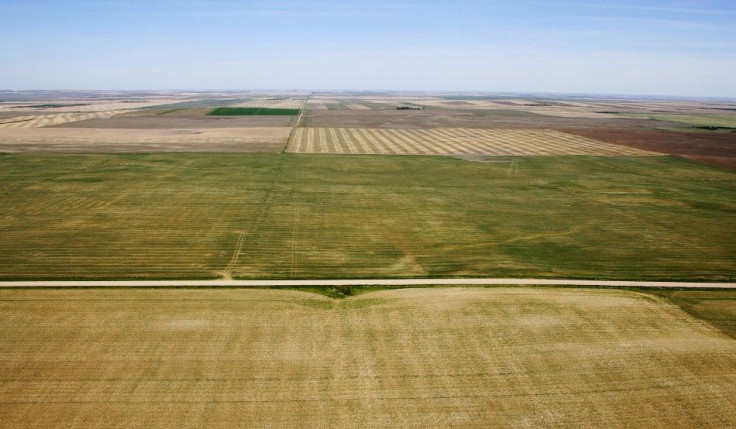Facts About US-Canada Border On 171st Anniversary Of Demarcation

June 15, 2017, marks the 171st anniversary of the U.S.-Canada border establishment. The Oregon Treaty signed between Great Britain and the United States on this day in 1846, settled a long-standing dispute over who controlled the Oregon territory.
The treaty established the 49th parallel from the Rocky Mountains to the Strait of Georgia as the boundary between the United States and what was then British Canada. Following the treaty, the United States gained formal control over the future states of Oregon, Washington, Idaho, and Montana, and the British retained Vancouver Island along with navigation rights to part of the Columbia River.
Read: Immigration In Canada: Undocumented Immigrants Should Be Deported, Half Of Canadians Say
In 1818, the United States and British Canada agreed to a joint occupation of Oregon territory for 10 years, an arrangement that was extended for an additional 10 years in 1827. However, after 1838, the issue of who possessed Oregon became increasingly controversial. As unrest grew, on June 15, 1846, the Oregon Treaty was signed as a compromise, which agreed upon an extended border between the two countries, along the 49th parallel to the Strait of Georgia, just short of the Pacific Ocean.
Read: How To Move To Canada? Rate Of Americans Turned Away At The Border Surges
Here are a few interesting facts about the U.S.-Canada border, compiled from various sources:
- According to the U.S. Geological Survey (USGS), the length of the International Boundary line of the U.S.-Canadian border, excluding Alaska, is approximately 3,987 miles.
- There are 119 official border crossings along the US-Canadian border. This includes the border between Alaska and the Yukon Territory. You can find a list of them here .
- Ninety percent of Canadians live within 100 miles of the border. Only 12 percent of Americans live within 100 miles of the Canadian border though.
- 2.8 million Canadians currently live in the U.S. By contrast, there are 36 million Canadians living within their own borders. That’s almost 13 percent of the population.
- In 2016 alone, U.S. and Canada had exports worth over $260,000 million and imports worth over $270,000 million.
- In 2014, Canada-U.S. trade was an astounding $658 billion dollars , or the net worth of Bill Gates.
- The share of total exports going from Canada to the U.S. is 73 percent as per 2009 data.
- While the total imports to Canada coming from the U.S. as of 2009 was 63 percent.
- The amount of trade that passes daily along the Ambassador Bridge, the busiest border crossing in North America is almost $500 million.
- As per 2010 data, 28,814 trucks cross the border daily. While 140,728 cars and other vehicles that cross the border daily, according to the same data.
- Roughly 300,000 people cross the Canada-U.S. border per day.
- There is a list of prohibited foods that cannot be brought across the border. Canadian actor Ryan Reynolds once smuggled apple pie across the border. You need to declare the food you are bringing over and let the border agents inspect it.
- Canada produces 71 percent of the world’s maple syrup. In 2014, the U.S. imported nearly $148 million worth of maple syrup from Canada.
- There is a 20-foot gap between America and Canada to make monitoring easier. The gap is 5,500 miles long and is “considered the longest deforested straight line in the world” according to the Guinness World Records .
© Copyright IBTimes 2024. All rights reserved.





















